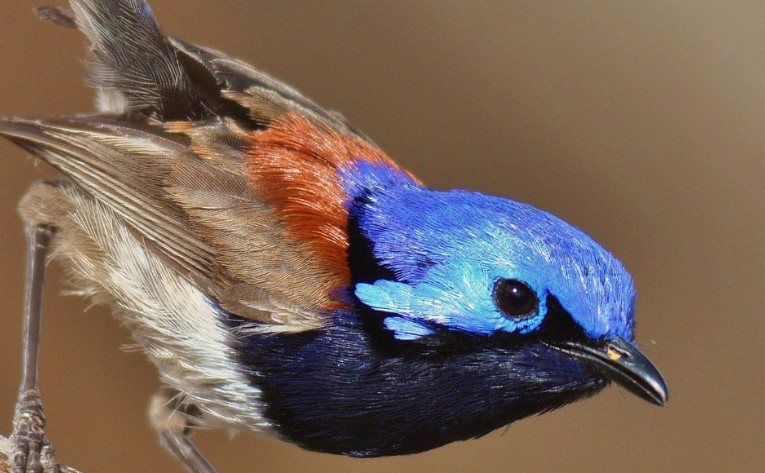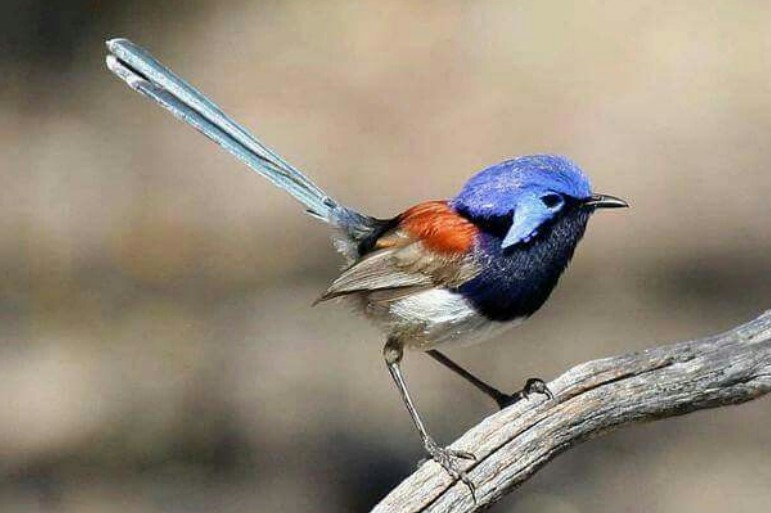The blue-breasted fairywren (Malurus pulcherrimus) occurs in sand plains and heathy Mallee across central southwestern Australia and the Eyre Peninsula, regions now extensively cleared for wheat farming. As a result, the bird has been confined to a fraction of its former range. It belongs to the Australasian wren family, Maluridae. It is also known as the Blue-breasted Wren and the Purple-breasted Fairy Wren. The size of the blue-breasted fairywren is about 130–150 mm in length.
Non-migratory birds rest, roost, and forage under the cover of shrubbery and other small invertebrates, eating beetles, ants, weevils, flies, and wasps. The birds feed a great deal on the ground, hop-searching along with their tails cocked high over their heads. There are usually two to five blue-breasted fairy wrens living in communal groups during the breeding season; frequently more than one male and occasionally more than one female help tend the nest, but only the female builds and incubates the nest.
There are about three hectares of territory for each group, which is resident all year. During foraging rounds, group members communicate by uttering a soft single sree; in alarm, they churn. Blue-breasted fairywrens live with Variegated Fairywrens in the north and east and red-winged fairywrens in the wetter southwest.

Nesting and breeding occur in August–September. Nest similar to Variegated Fairy-Wren, near ground If the nest or young are threatened, both adult sexes employ the “rodent-run” predator-distracting technique typical of the Maluridae.
The male bird has a crown and mantle in violet-blue; long-pointed coverts are blue. Lores, nape collar, and lower back are black; scapular patches are mid-chestnut; wings are deep grey-brown; the tapered tail is dull blue with a narrow white tip. Throat and breast dark violet-blue; belly white. Their eyes are brown. Bill is black. Feet are flesh-grey. In non-breeding plumage, lores and bill are female, but lores and bill are black. While the female bird is grey-brown above, with chestnut lores encircling its eyes, and cream-white below. Bill is chestnut-red. The immature is browner. The blue-breasted fairywren call is a series of short, high-pitched reed-like trills in contact, churring alarm trrrts.
The brilliant plumage bird lays 3 white eggs, which are spotted with red-brown at the larger end; they are oblong-oval, about 18 x 12 mm. A female is responsible for incubation. Blue-breasted fairywren has two populations, one across southwestern Australia and the other over the Eyre Peninsula, SA, in sand-plain heath and Mallee. A three-hundred-kilometer gap separates the species’ range from the Great Australian Bight to the Eyre Peninsula, an unusual feature of their distribution. No races.
Read More: Red-backed fairywren (Malurus melanocephalus)







